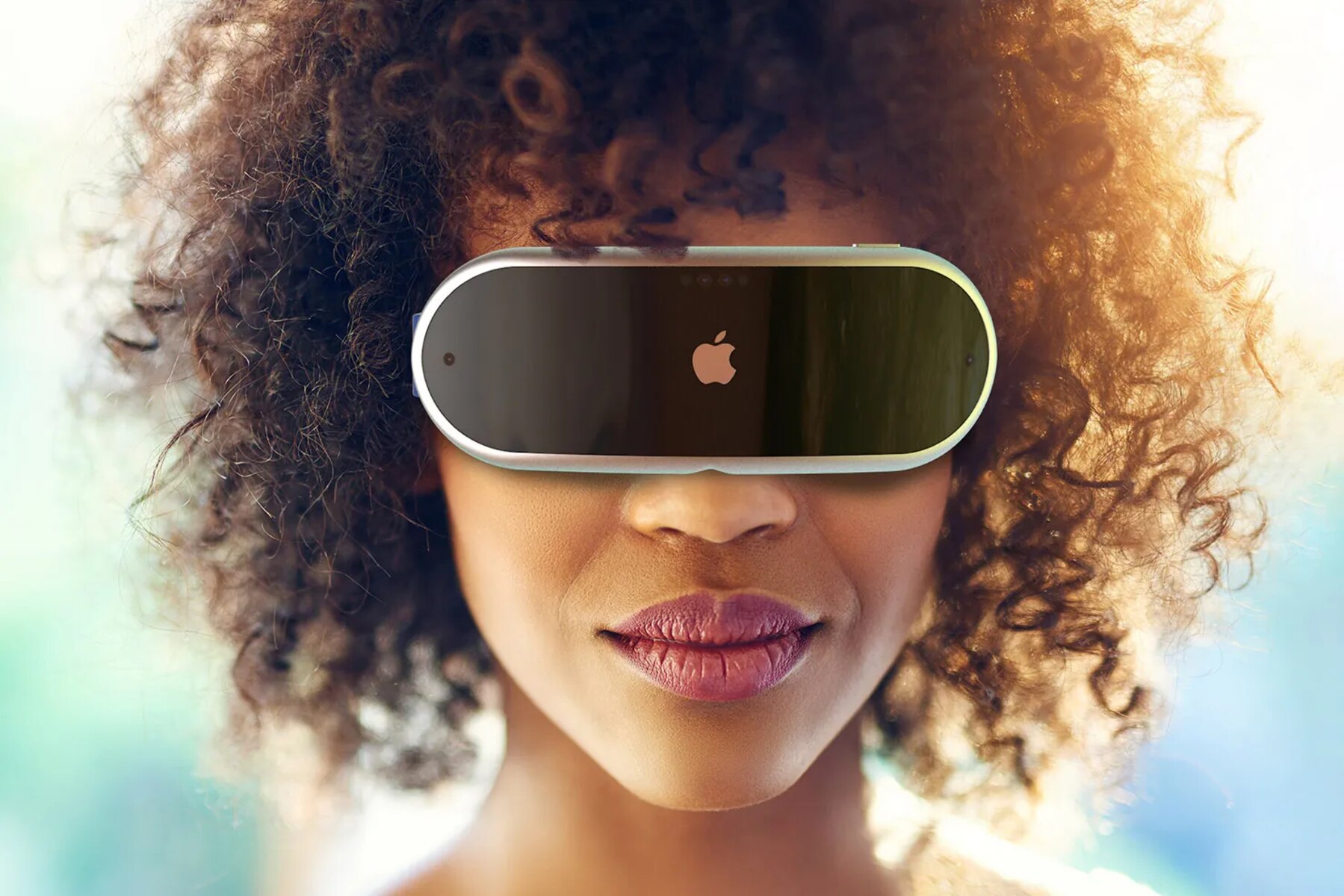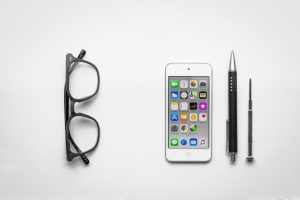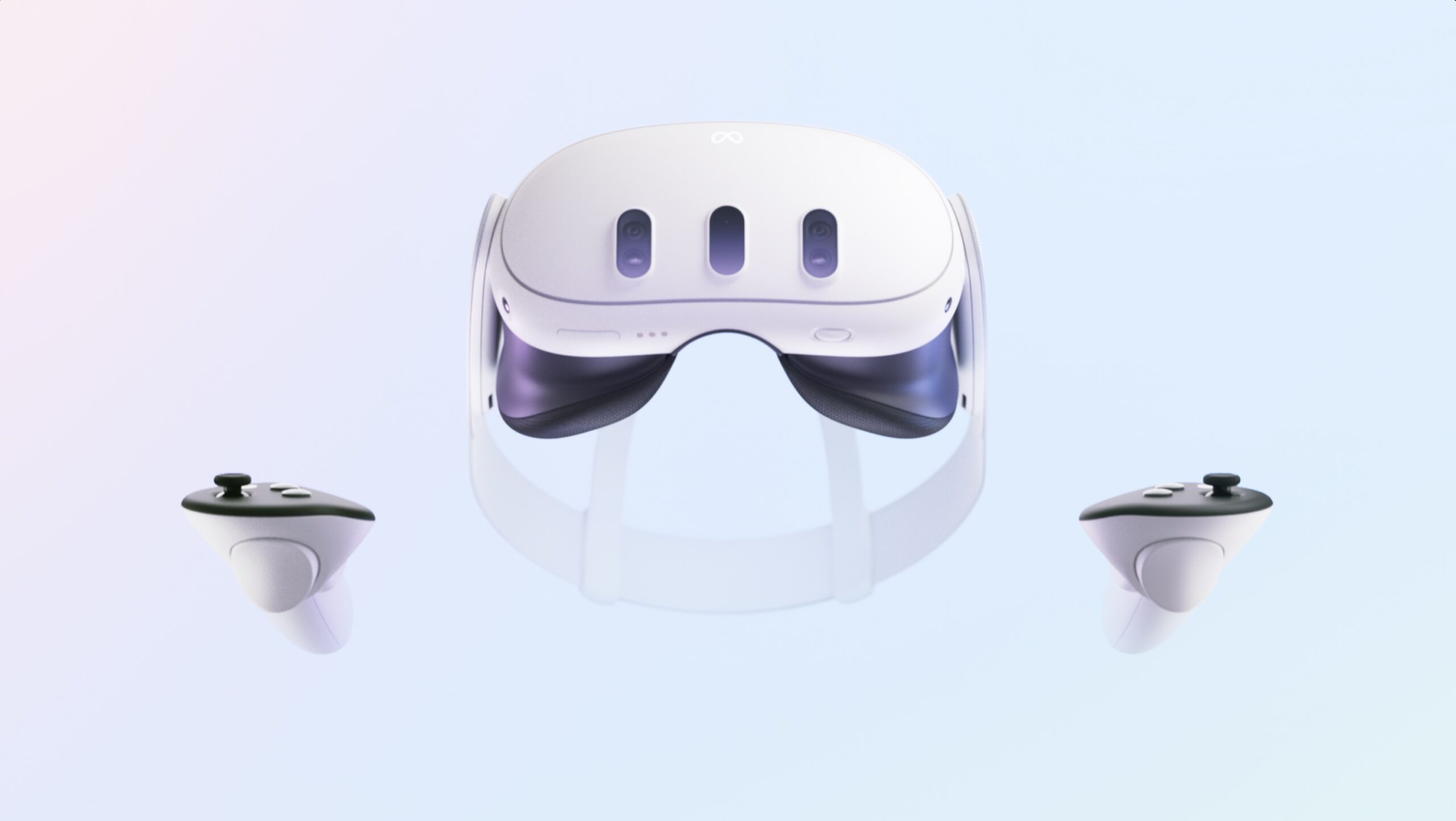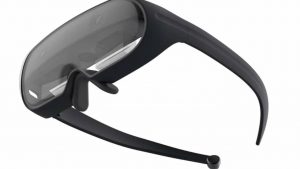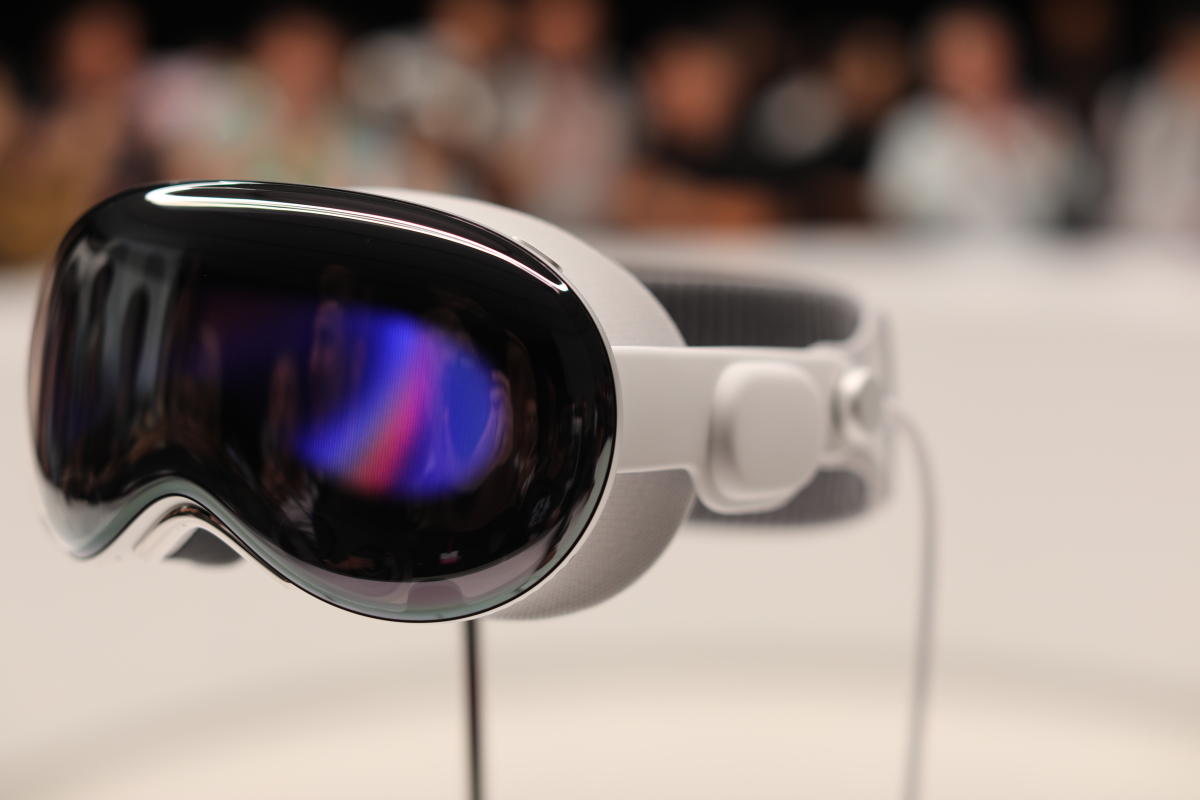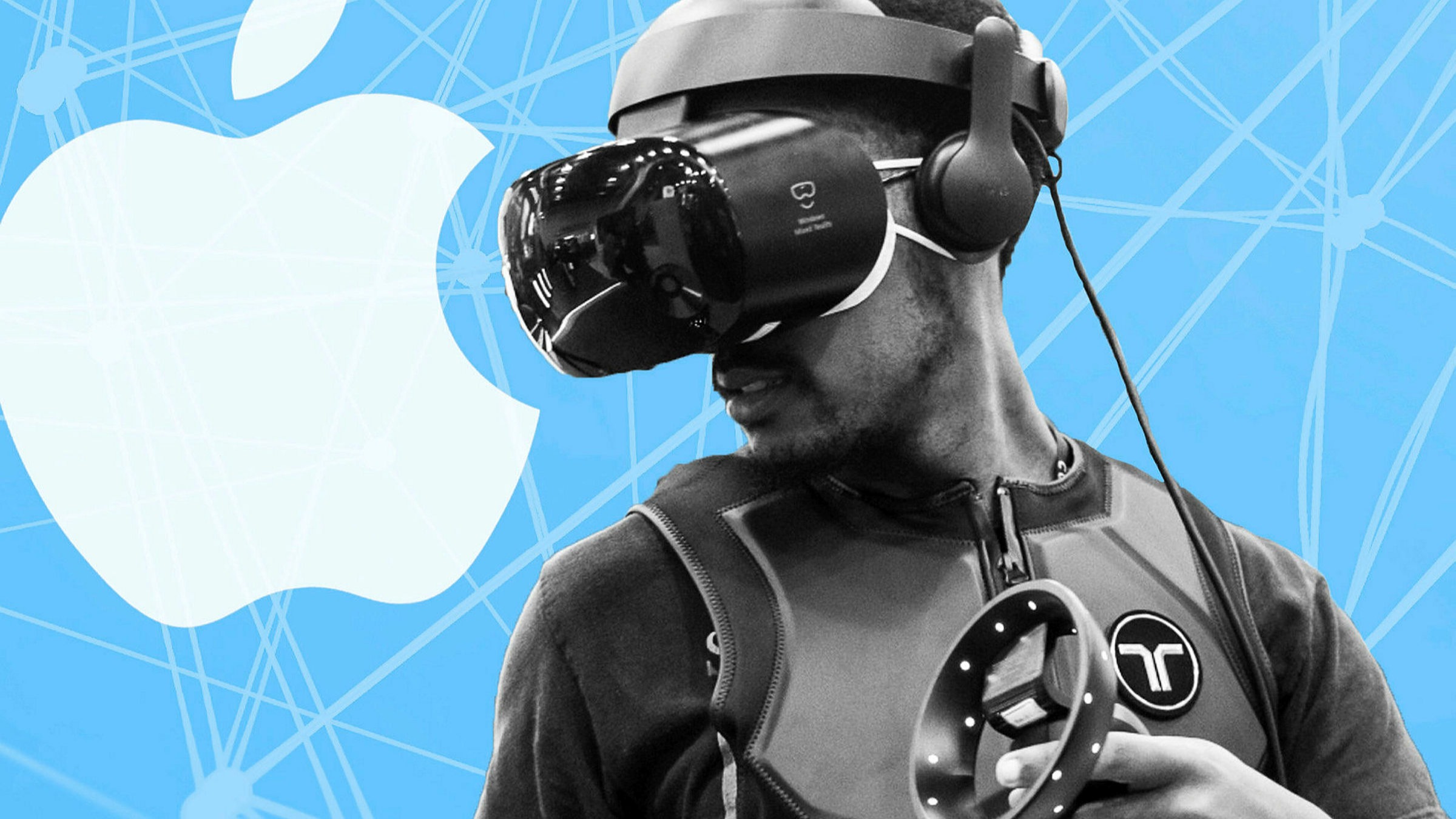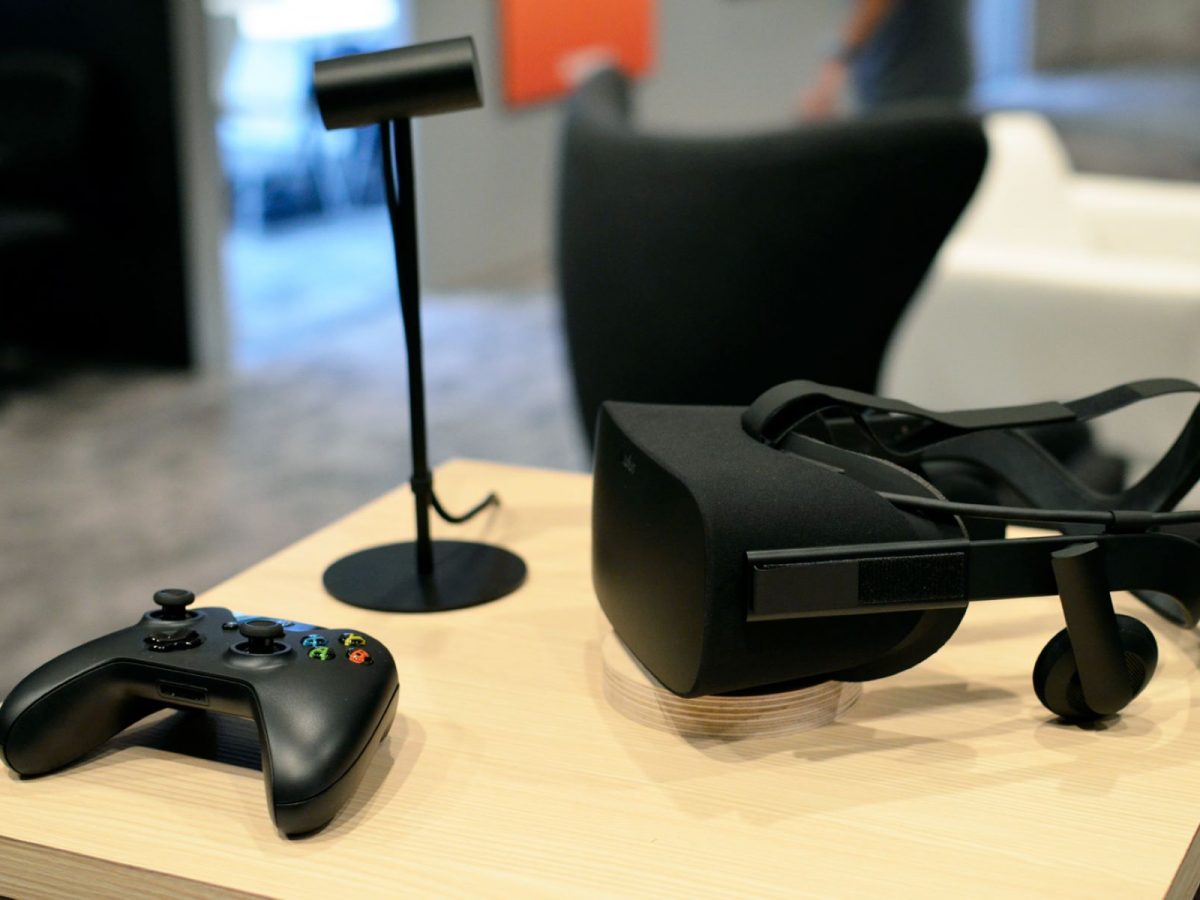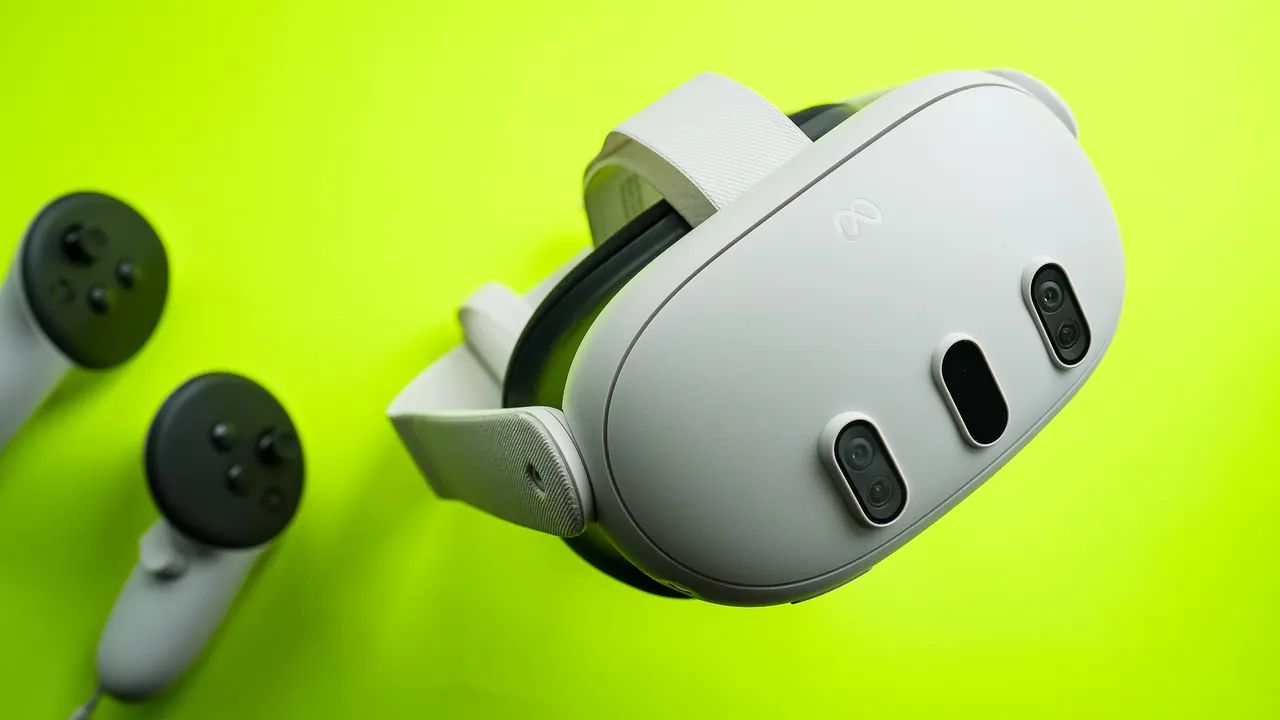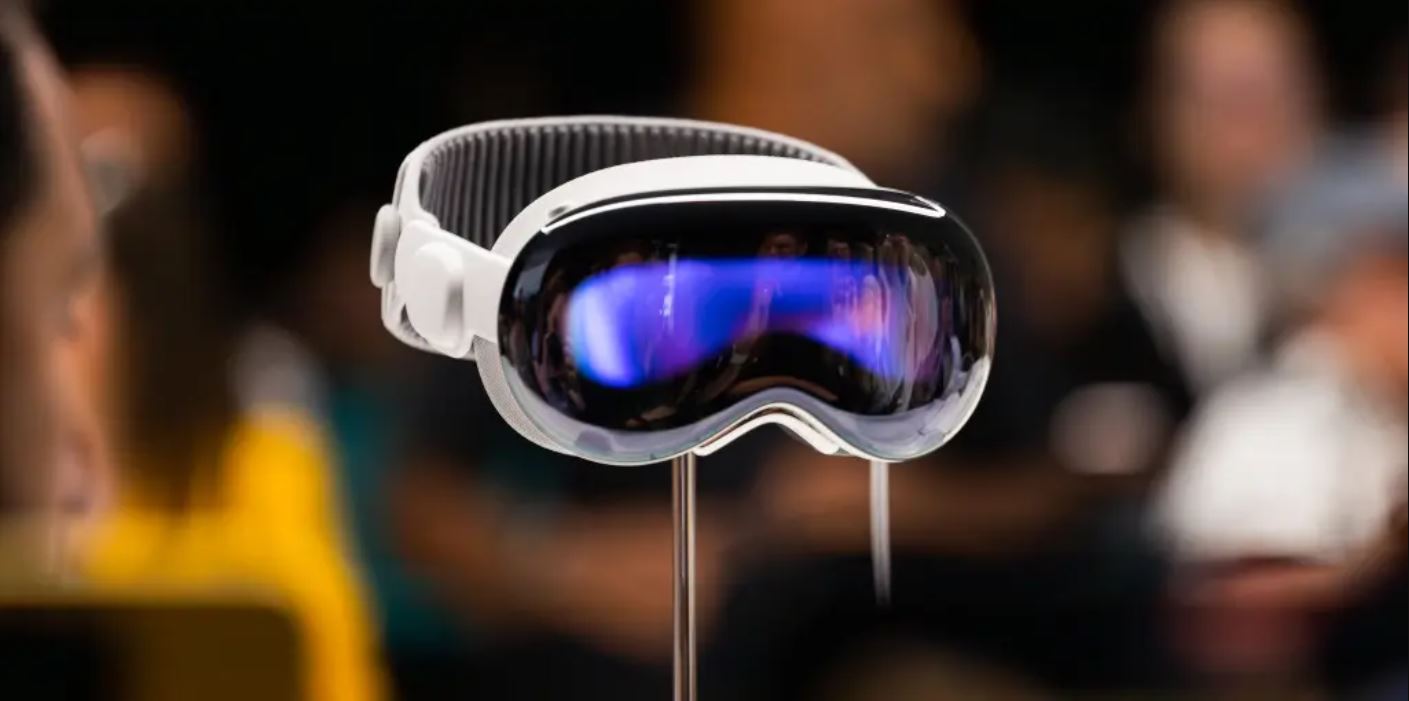Introduction
Virtual Reality (VR) technology has taken the world by storm in recent years, promising immersive and interactive experiences like never before. As technology continues to advance, companies are constantly exploring ways to capitalize on this growing trend, and tech giant Apple is no exception. With a reputation for innovation and cutting-edge products, many have been eagerly anticipating the release of an Apple VR headset.
VR, in simple terms, is a simulated experience that can be similar to or completely different from the real world. It involves the use of a headset or goggles that display a virtual environment to the user, creating the illusion of being physically present in that environment. This technology has gained popularity not only in the gaming industry but also in fields such as education, entertainment, and even healthcare.
Over the years, VR technology has undergone significant advancements, offering more immersive and realistic experiences. From clunky prototypes to sleek and comfortable headsets, the technology has become more accessible to the masses. Companies like Oculus, HTC, and Sony have made notable strides in the VR market, capturing the attention of consumers and paving the way for a VR revolution.
Apple, known for its innovative and user-friendly devices, has expressed a keen interest in the VR space. The company has been investing heavily in augmented reality (AR) technology for quite some time, with features like ARKit integrated into the iOS ecosystem. With AR being a close cousin to VR, it is only natural for Apple to explore the possibility of entering the VR market.
Rumors and speculations regarding Apple’s foray into virtual reality have been circulating for years, fueling excitement among tech enthusiasts and Apple fans alike. While the company has remained tight-lipped about its VR plans, industry insiders and patent filings have provided valuable insights into what we might expect from an Apple VR headset.
As with any Apple product, the anticipation for the features and design of a potential VR headset is palpable. From 360-degree video playback to seamless integration with Apple’s ecosystem, users are eager to know how Apple will bring its trademark innovation to the realm of virtual reality. Combined with Apple’s meticulous attention to detail and premium build quality, an Apple VR headset could be a game-changer in the industry.
While Apple’s VR headset has not yet been officially confirmed, the tech world eagerly awaits a groundbreaking announcement from the company. With the convergence of Apple’s AR investments and the rise of VR technology, the future of Apple in the virtual reality space holds immense potential.
What is Virtual Reality?
Virtual Reality (VR) is an innovative technology that seeks to create a fully immersive and interactive experience for users. It transports individuals to simulated environments that can be similar to or completely different from the real world. The primary device used in VR experiences is a headset or a pair of goggles, which blocks out the external world and provides a visual and auditory display that tricks the senses into perceiving the virtual environment as real.
One of the fundamental components of VR is the concept of presence. Presence refers to the feeling of being physically present in the virtual environment, even though the physical body is actually in a different location. This sense of presence is achieved through the combination of immersive visuals, spatial sound, and interactive elements that respond to the user’s movements and actions.
In addition to visuals and sound, VR can also incorporate other sensory inputs to enhance the immersive experience. Some advanced VR systems may include features like haptic feedback, which allows users to feel physical sensations within the virtual world, further blurring the lines between reality and the simulated world.
The applications of virtual reality extend far beyond gaming. In fact, VR has the potential to revolutionize various industries such as education, healthcare, architecture, and entertainment. It enables educators to transport students to historical events or distant locations, providing a more engaging and interactive learning experience. In healthcare, VR can help simulate medical procedures, train surgeons, and provide therapy for patients experiencing pain or anxiety.
One of the key advantages of VR is its ability to create empathy and emotional connections. By immersing users in virtual environments, VR experiences can evoke strong emotional responses and empathy for various scenarios. This has resulted in the use of VR for empathy training, allowing individuals to better understand and relate to others’ experiences.
As technology continues to evolve, VR experiences are becoming more seamless and intuitive. User interfaces have become more user-friendly, allowing individuals to navigate and interact with the virtual environment more easily. Additionally, advancements in display resolutions and graphics processing have contributed to more realistic and immersive visuals within the virtual world.
Virtual Reality has the potential to revolutionize how we perceive and interact with the digital world. Its ability to transport us to new places and create unique experiences holds immense promise for the future. As the technology continues to advance, we can expect even more exciting and innovative applications of virtual reality in various industries.
The Growth of VR Technology
Virtual Reality (VR) technology has experienced remarkable growth and development over the past decade. What once seemed like a distant dream has now become a tangible reality, thanks to advancements in hardware, software, and user experience. The growth of VR technology can be attributed to several key factors.
One of the most significant drivers of VR technology’s growth is the increasing accessibility and affordability of VR devices. In the early days, VR headsets were expensive and primarily available to industry professionals. However, as the technology matured, more affordable options entered the market, making VR accessible to a broader range of consumers. Companies like Oculus, HTC, and Sony have played a crucial role in democratizing VR by releasing consumer-friendly headsets at affordable price points.
Another factor contributing to the growth of VR is the development of powerful hardware. Virtual reality demands high-performance components to deliver seamless and immersive experiences. As technology advances, components like graphics cards, processors, and displays have become more powerful and affordable. This has enabled VR headsets to offer higher resolutions, faster frame rates, and more detailed graphics, greatly enhancing the overall quality of VR experiences.
Furthermore, the growth of VR technology has been driven by the continuous improvement of software and the availability of a diverse range of content. Developers have been pushing the boundaries of what is possible in VR, creating innovative and engaging experiences across various genres, including gaming, education, entertainment, and simulation. This rich pool of content has been instrumental in attracting users to the platform and demonstrating the potential of VR technology beyond mere entertainment.
The adoption of VR technology has been further accelerated by the integration of VR capabilities into other industries. For instance, VR is being used in architecture and design to create virtual walkthroughs and interactive visualizations of buildings. In healthcare, VR is employed for simulations and training, allowing medical professionals to gain valuable hands-on experience in a virtual environment. The use of VR in these industries not only showcases the practical applications of the technology but also drives the demand for more refined and advanced VR solutions.
Moreover, the growth of VR technology has been facilitated by the increasing consumer awareness and interest in immersive experiences. As people seek out new and engaging forms of entertainment, VR provides a unique and captivating way to escape reality and immerse oneself in virtual worlds. The popularity of VR gaming, in particular, has played a significant role in promoting the adoption of VR technology, as gamers are eager to explore new frontiers and experiences.
The future of VR technology looks promising, with ongoing advancements in areas such as augmented reality (AR), mixed reality (MR), and haptic feedback. These developments hold the potential to further enhance the realism and immersion of VR experiences. As technology continues to evolve and VR becomes more integrated into our daily lives, we can expect even more exciting and innovative applications in fields like education, healthcare, communication, and entertainment.
Apple’s Interest in VR
Apple, known for its innovative products and forward-thinking approach, has been quietly exploring the world of virtual reality (VR) in recent years. While the company has not made any official announcements regarding its VR plans, there are indications that Apple is indeed interested in leveraging this cutting-edge technology.
One of the first signs of Apple’s interest in VR came in the form of its acquisitions of several VR-focused companies. In 2013, Apple acquired PrimeSense, an Israel-based company known for its depth-sensing technology. This technology is vital in creating immersive VR experiences, as it allows for precise tracking of the user’s movements within a virtual environment. In addition to PrimeSense, Apple has also acquired other companies specializing in motion tracking and VR-related technologies, suggesting a strategic move towards VR development.
Furthermore, Apple has been actively filing patents related to VR and augmented reality (AR) technologies. These filings offer insights into the company’s explorations and potential areas of interest. Some of the patented technologies include improved head-mounted display (HMD) designs, eye-tracking systems, and gesture-controlled interfaces. These patents suggest that Apple is investing in the development of a unique and user-friendly VR solution that aligns with its design philosophy and commitment to delivering exceptional user experiences.
Apple’s focus on AR technologies is also a significant indicator of its interest in VR. Augmented reality involves overlaying digital content onto the real world, creating a blended experience. While AR and VR are different technologies, they often go hand in hand. Apple has been actively developing AR capabilities through its ARKit framework, which allows developers to create AR applications for iOS devices. This investment in AR technology demonstrates Apple’s commitment to exploring new ways of merging the digital and physical worlds, setting the stage for potential advances in VR.
Another aspect that highlights Apple’s interest in VR is the company’s emphasis on privacy and data security. Apple has consistently upheld a strong stance on privacy, positioning itself as a company that values user data protection. With VR technology capturing various personal data points, including user movements and interactions, Apple’s focus on privacy may play a significant role in differentiating its VR offering from competitors.
While Apple has been tight-lipped about its VR endeavors, the company’s interest is evident in its strategic acquisitions, patent filings, and investments in AR technologies. With its history of reimagining existing technologies and delivering exceptional user experiences, it is not surprising that Apple would want to explore the possibilities offered by VR. As VR continues to gain traction and evolve, Apple’s unique approach and commitment to innovation could provide a new dimension to the technology, setting the stage for exciting advancements in the VR market.
Rumors and Speculations about Apple’s VR Headset
Over the years, rumors and speculations about Apple’s potential entry into the world of virtual reality (VR) have circulated among tech enthusiasts and industry insiders. While Apple has not officially confirmed the existence of an Apple VR headset, various reports and leaks have provided intriguing hints about what we might expect from this highly anticipated device.
One of the most persistent rumors is that Apple’s VR headset will be a standalone device, meaning it will not require a computer or smartphone to function. This aligns with Apple’s overarching strategy of creating seamless and integrated user experiences. By developing a self-contained VR headset, users would have the freedom to immerse themselves in virtual environments without the need for any external devices.
Reports suggest that Apple’s VR headset will be equipped with cutting-edge display technology. It is rumored that the headset will feature high-resolution micro OLED displays, providing users with stunning visuals and true-to-life imagery. This display technology is expected to contribute to an immersive and realistic VR experience, allowing users to get lost in the virtual world.
Another speculation revolves around the use of advanced eye-tracking technology in the Apple VR headset. Eye-tracking allows for more precise and natural interaction within virtual environments. This technology can enhance the realism and immersion by enabling features like foveated rendering, which allocates more processing power to the area of the display the user is actively focusing on. Eye-tracking can also facilitate intuitive user interfaces and provide a more comfortable viewing experience for extended VR sessions.
There have also been rumors regarding Apple’s focus on comfort and aesthetic design. Apple is renowned for its attention to detail and emphasis on user experience. It is speculated that the Apple VR headset will feature a sleek and minimalist design, with lightweight materials and ergonomic considerations. Apple’s focus on comfort and design could make their VR headset more appealing to a broader audience, ensuring a pleasant and enjoyable user experience.
Furthermore, there have been whispers in the tech community about potential integrations between Apple’s existing ecosystem and the VR headset. It is speculated that the headset will offer seamless compatibility with iPhones, iPads, and Macs, enabling users to effortlessly access and interact with VR content from their Apple devices. Additionally, integration with services like Apple Arcade could provide a wealth of VR gaming experiences from renowned developers and studios.
While these rumors and speculations provide exciting glimpses into what Apple’s VR headset might offer, it is essential to take them with a grain of salt until official confirmation is obtained. Apple is known for its secrecy and surprises, often surpassing expectations with innovative features and breakthrough technologies. As the world eagerly awaits Apple’s official entrance into the VR market, only time will tell how these rumors and speculations will align with reality.
Possible Features of Apple’s VR Headset
While Apple has kept details of its rumored VR headset tightly under wraps, there are several features that enthusiasts and industry analysts anticipate based on Apple’s design philosophy and previous innovations. While the following features are speculative, they provide intriguing possibilities for what Apple’s VR headset may offer.
One potential feature is advanced positional tracking. Apple could leverage its expertise in motion sensing technology to deliver precise and accurate tracking of the user’s movements within the virtual world. This capability would enhance the immersion and realism of the VR experience, allowing users to freely explore virtual environments and interact with virtual objects.
Given Apple’s commitment to display quality, it is likely that the VR headset will feature high-resolution screens. Apple may incorporate micro OLED or mini-LED display technology to deliver crisp visuals with vibrant colors and deep contrasts. This approach would ensure that users are fully immersed in the virtual world, with visuals that rival or even surpass existing VR headsets in the market.
Apple’s renowned design expertise could extend to the comfort and ergonomics of the VR headset. The device may feature a lightweight and well-balanced design, making it comfortable to wear for extended periods. Additionally, Apple may employ innovative materials and design elements to ensure a snug fit and easily adjustable straps, enhancing comfort and usability for a wide range of head sizes and shapes.
Integration with Apple’s ecosystem is another possible feature. Users may be able to seamlessly connect their iPhones, iPads, or Macs to the VR headset, allowing for easy access to VR content and applications. This integration could provide a cohesive and familiar user experience, enabling users to transition seamlessly between their Apple devices and the VR headset.
Apple’s focus on user privacy and data protection could extend to its VR headset. Privacy features, such as user-controlled data sharing and enhanced security protocols, may provide peace of mind for users concerned about their personal information. This emphasis on privacy could be a pivotal differentiation factor for Apple’s VR headset in a market where data privacy is becoming an increasingly important consideration.
In addition to gaming and entertainment, Apple’s VR headset could find applications in other domains such as education and productivity. The device may offer educational experiences, allowing students to immerse themselves in historical events or explore virtual science labs. It could also support productivity features, such as virtual meeting rooms or collaborative design spaces, enabling users to collaborate and work together in virtual environments.
Finally, Apple may prioritize ease of use and intuitive user interfaces. The VR headset could feature Apple’s signature simplicity and intuitive controls, allowing users to navigate and interact with the virtual world effortlessly. Streamlined and user-friendly interfaces could empower users to focus on the experience rather than complex navigation, making VR accessible to a wider audience.
While these features are speculation, they align with Apple’s reputation for innovation, attention to detail, and commitment to outstanding user experiences. As Apple continues to keep its VR plans under wraps, users eagerly anticipate an official unveiling that may exceed expectations and redefine the VR landscape.
Possible Release Date
While Apple has not provided any official information about the release date of its rumored VR headset, industry analysts and insiders speculate on potential timing based on various factors. The release date is a highly anticipated piece of information, as it will determine when consumers can finally get their hands on Apple’s VR offering.
Apple is known for meticulously planning product launches to maximize impact and ensure a seamless user experience. Given the complexity of developing a VR headset, it’s likely that Apple will take the time necessary to refine and perfect the device before its release. Therefore, it is reasonable to expect that Apple’s VR headset may not hit the market until 2022 or later.
Another factor that could influence the release date is competition. VR is a rapidly evolving market, with several major players already offering VR headsets. It is possible that Apple may be waiting for the right moment to enter the market and differentiate itself from competitors. By carefully observing industry trends and consumer demands, Apple may time the release of its VR headset strategically to make a significant impact.
Additionally, the release date of Apple’s VR headset may be influenced by the availability and readiness of key technologies. Apple is known for its commitment to delivering high-quality, cutting-edge products, and it is likely that the company will wait until the necessary technologies are mature enough to meet its standards. This could include advancements in display technology, processing power, and other hardware components essential for providing a superior VR experience.
It’s important to note that Apple often holds dedicated events to unveil new products. These events generate significant media attention and allow Apple to showcase its latest innovations. If Apple plans to release a VR headset, it is possible that the company will hold a special event to announce and demonstrate the device. Keeping this in mind, it is worth considering whether Apple has an upcoming event scheduled where the VR headset could be announced.
While specific details about the release date of Apple’s VR headset remain speculative, the anticipation continues to grow among tech enthusiasts. Apple’s track record of delivering polished and groundbreaking products suggests that the company will not rush the release of its VR headset. This extra time may be used to refine the device, build a robust software ecosystem, and ensure a seamless user experience. As the industry eagerly awaits official news from Apple, it’s a matter of patience and excitement as we look forward to the day when Apple’s VR headset finally becomes available to consumers around the world.
Conclusion
The potential release of an Apple VR headset has generated significant excitement and speculation within the tech community and among Apple enthusiasts. While Apple has remained tight-lipped about its VR plans, the company’s actions and investments in related technologies provide valuable insights into its interest in the virtual reality space.
Virtual reality technology has rapidly evolved, offering immersive and interactive experiences across various industries. As a renowned innovator, Apple has the expertise and resources to enter the VR market and potentially redefine the way we perceive and interact with virtual environments.
In exploring the growth of VR technology, it is evident that Apple’s interest is not unfounded. The accessibility, advancements in hardware, and the diverse range of content have paved the way for VR’s increasing popularity. Apple’s foray into VR aligns with its commitment to delivering exceptional user experiences and pushing the boundaries of technology.
While rumors and speculations circulate about the features and release date of an Apple VR headset, the specifics remain uncertain. However, it is reasonable to anticipate features such as advanced positional tracking, high-resolution displays, comfort-focused design, integration with Apple’s ecosystem, and a user-friendly interface.
The release date of Apple’s VR headset is also a topic of eager anticipation. While it is challenging to pinpoint an exact timeframe, it is expected that Apple will take the necessary time to refine and perfect its VR offering, potentially releasing it in 2022 or later.
In conclusion, the potential release of an Apple VR headset represents an exciting prospect for technology enthusiasts and consumers alike. Apple’s reputation for innovation, attention to detail, and commitment to outstanding user experiences positions the company as a significant player in the VR market. As developments unfold and Apple’s VR plans come to fruition, we can anticipate a product that pushes the boundaries of VR technology, delivering immersive and exceptional experiences to users around the world.







